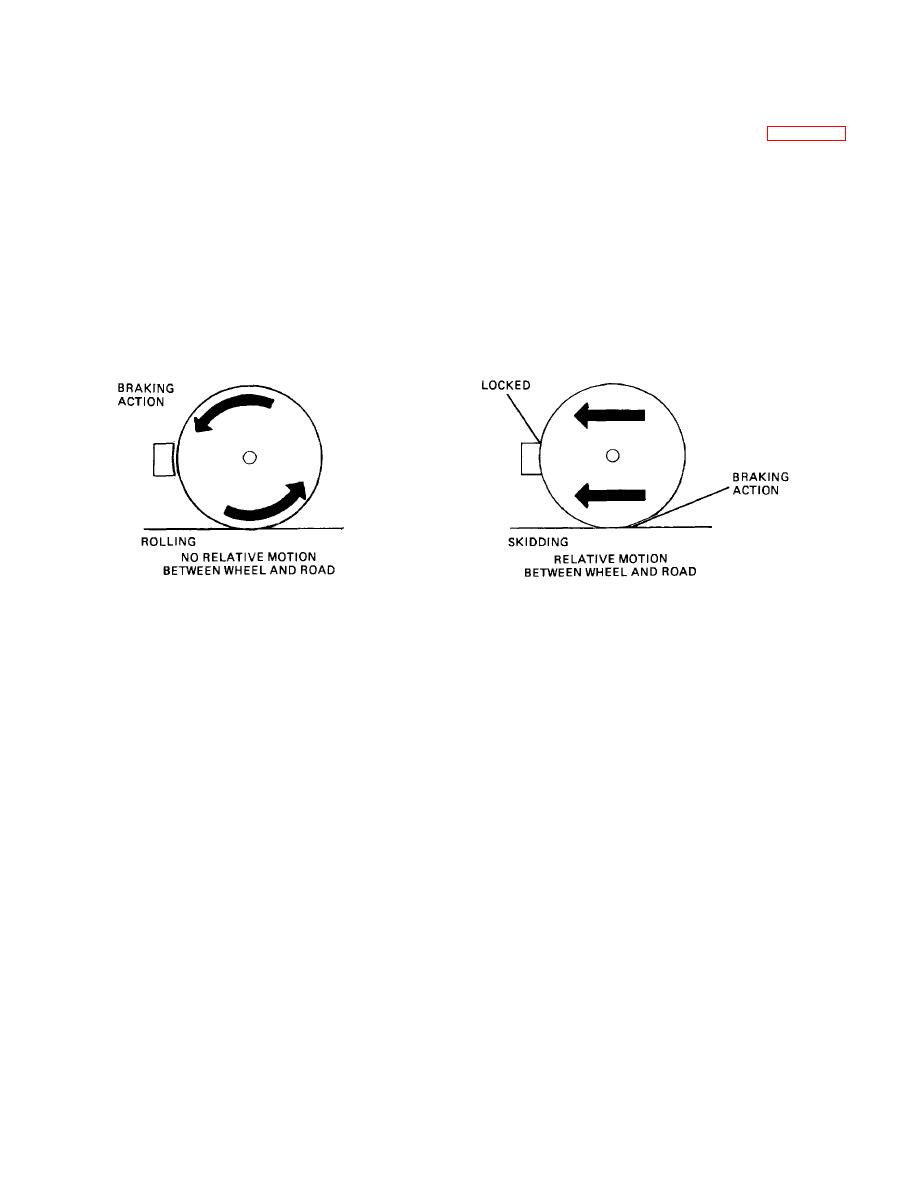
| Tweet |

Custom Search
|
|

|
||
 TM 9-8000
surfaces together will tend to increase the friction to such
lock and the wheel will skid. The action produced when
a degree that the wheel will lock. When this happens,
a wheel rolls and when it skids is shown in figure 34-4.
braking action is caused by friction between tire and
When a wheel rolls along a road, there is no relative
road, which heats and wears the tire. Maximum
motion at the point that the tire makes contact with the
retardation is reached when friction between the brake
road because the wheel rolls with the road surface, but
surfaces is such that the wheel is about to lock. At this
when a wheel skids, there is relative motion at the point
point, friction between the brake surfaces is almost the
of contact because the wheel is not rotating while moving
same as that between tire and road. This is the
over the road surface. When a wheel skids, friction is
maximum amount of friction that can be used in retarding
reduced, which decreases the braking effect.
motion of the vehicle. Friction encountered between tire
Nevertheless, brakes are de- signed so that the vehicle
and road is the limiting factor of braking. Should friction
operator is able to lock the wheels if he or she applies
between braking surfaces go beyond this, the braking
enough force on the foot pedal.
surfaces will
TA233856
Figure 34-4. Action During Wheel Rolling and Skidding
34-3
|
||
 |
||